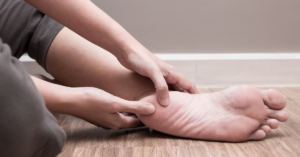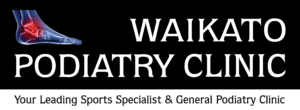Children’s Heel Pain (Sever’s Disease)
 What is Sever's Disease?
What is Sever's Disease?
This condition affects growing bone in the heel and is called Sever's Disease. Severs often affects physically active children within the age range of around 8-14 years. Severs is one of a group of disorders known as “Osteochondroses”. At around 8 years of age the secondary growth plate in the heel can become inflamed and sore; the exact reason is not really known.
How do I know if my child has Sever's Disease?
The affected person will be within the age group of 8-14 years, and they may start to complain of heel pain during or just after exercise, and begin limping during sports. Some patients liken the discomfort to a sharp pain, ache,or bruise in the heel. When questioning the patient about their pain, it often begins slowly and is increased during or after vigorous activity. Often the onset is not linked to one specific accident or traumatic incident, but it can be on occasion,such as jumping off a ledge onto your feet onto a concrete surface. There are several other causes of heel pain in children that need to be considered also, such as tarsal coalition and tendinopathies, but these are less common.
 Pain Reduction for Children's Heel Pain
Pain Reduction for Children's Heel Pain
There are a number of ways we can help you reduce the pain including:
- Maintaining a stretching exercise programme relevant to muscle tightness
- Occasionally wearing heel raises can help reduce the traction or pulling
- Some relative rest, and altering the activity duration and intensity is sometimes required
- Icing post-exercise is helpful
- On occasion, some other local modalities can be applied also
What Causes Sever's Disease?
At around 8 years of age the secondary growth plate in the heel opens. While it is active, it can become inflamed and sore. While the exact reason for this irritation is not known, it is thought to be a combination of things such as an increase in the amount of activity and trauma, and the traction or pulling of the large Achilles tendon as it inserts close to the growth plate. A traumatic episode such as a knock or landing with bare feet on hard surfaces may be enough to set this condition off.
How can Sever's Disease be treated?
Treatment centres around reducing the stress on the heel and trying to limit the pulling of the Achilles tendon on the heel; any pain should have a thorough investigation and diagnosis.
Treatment may comprise of:
- Identifying and stretching tight muscles
- Wearing appropriate footwear for correct activities
- Inserting heel raises into all shoes particularly those used for physical activity
- Eliminating any abnormal foot function often also helps reduce symptoms so some type of insert may be issued
- Activity moderation is sometimes required if the discomfort is great and the symptoms are unresponsive to treatment (this is not usually the case)
- It is often helpful to keep a pain diary to keep an accurate record of how symptoms are changing with treatment
Sever's is essentially a self-limiting disorder. This means it will not occur once the bone has finished growing. That does not mean symptoms are not real or should be ignored.

Long Term Solution
As with most conditions getting the correct diagnosis in the first place is so important. The sooner you get a correct diagnosis and treatment starts, the sooner you will be pain free. The good news is, Sever's Disease is essentially a self-limiting disorder, meaning it will not occur once the bone has finished growing. This is usually around 14 years of age, however bear in mind this does not mean that the symptoms are not real. The pain should not be ignored.
Following advice and prescribed guidance from your Podiatrist will improve your journey.
Still in Pain?
Are you are feeling like you have tried everything but are still in pain?
Do you feel like you have seen every health practitioner you can about your child's heel pain?
We have a track record of diagnosing and successfully treating cases that have previously proven difficult to resolve and we'd love to help your child get back on their feet doing what they love.

